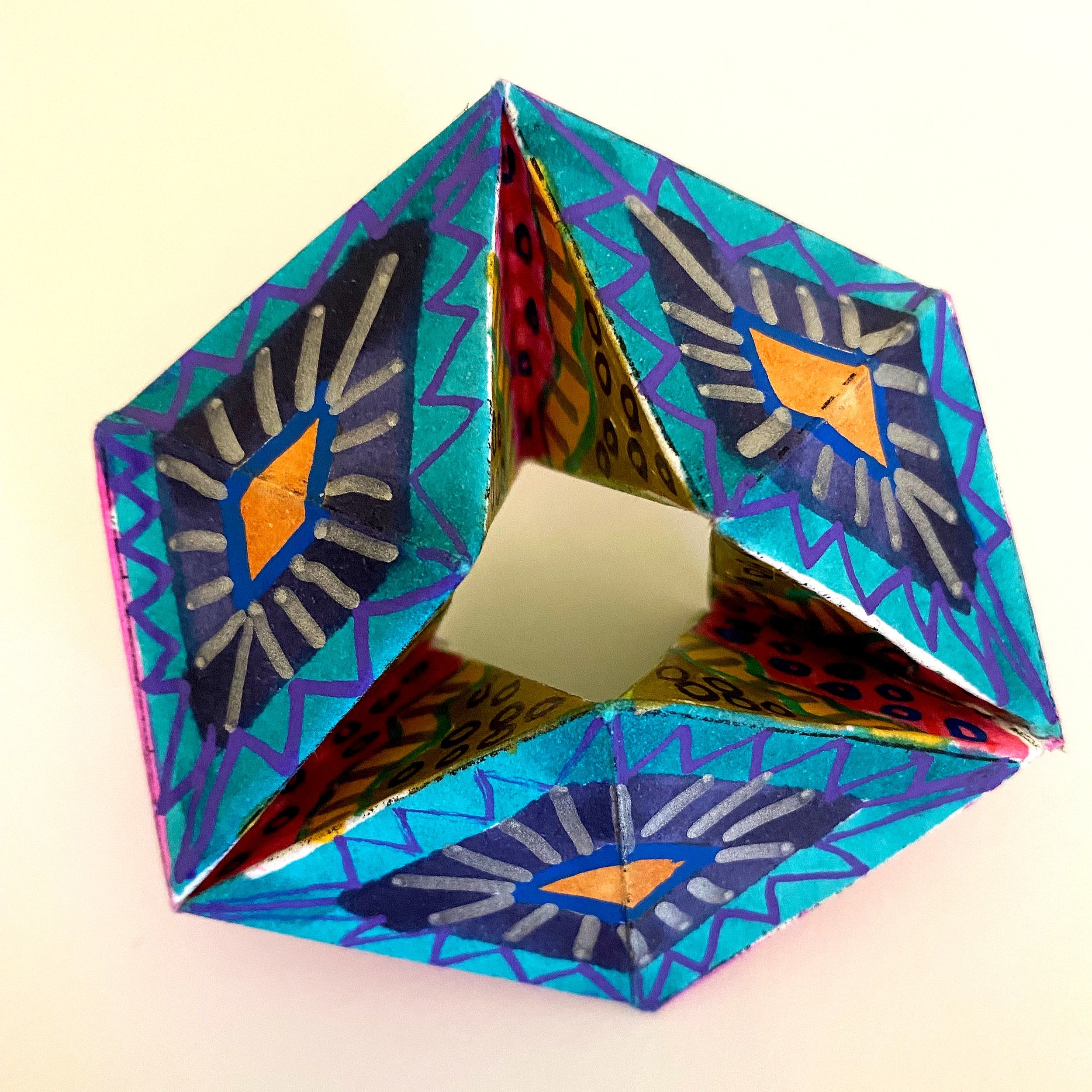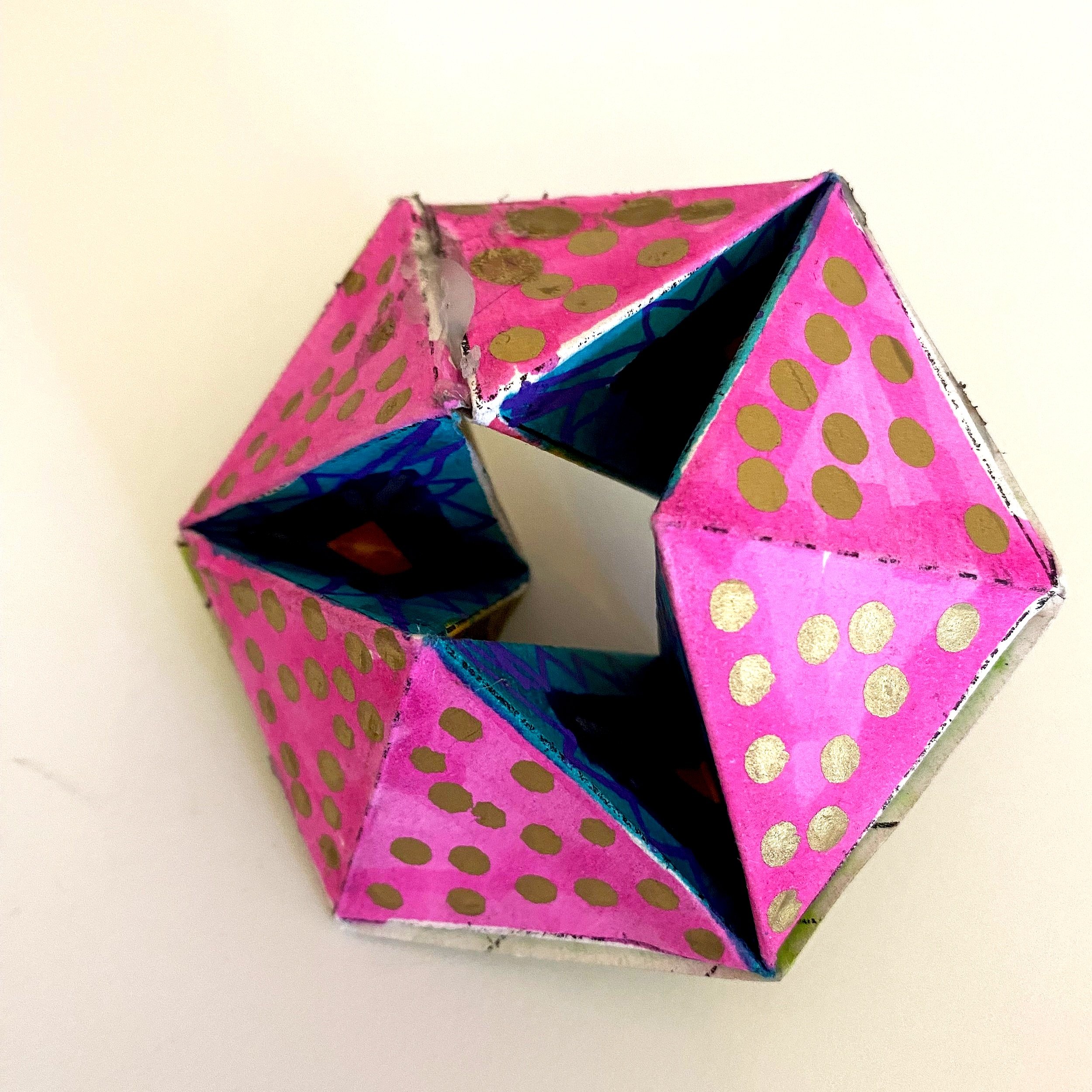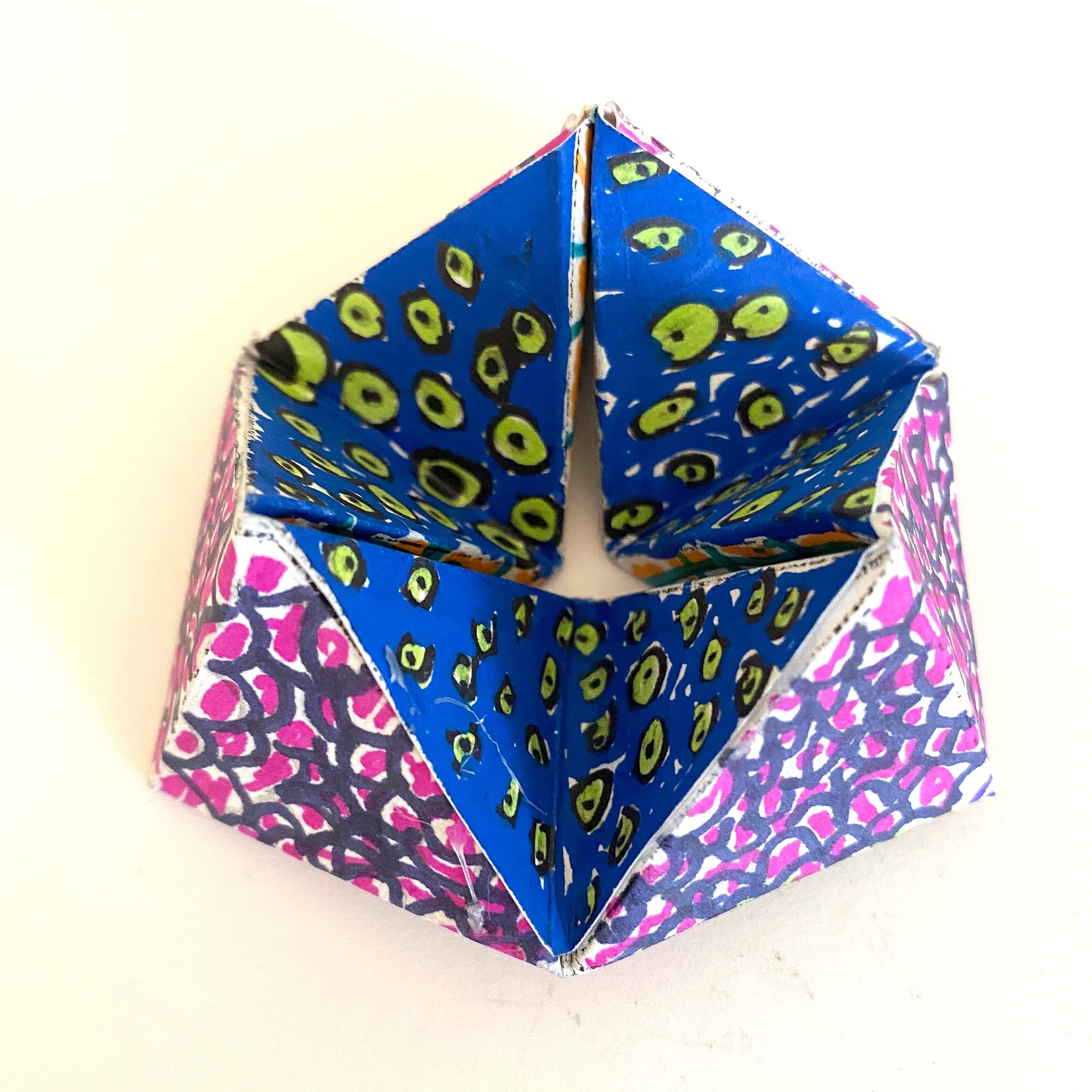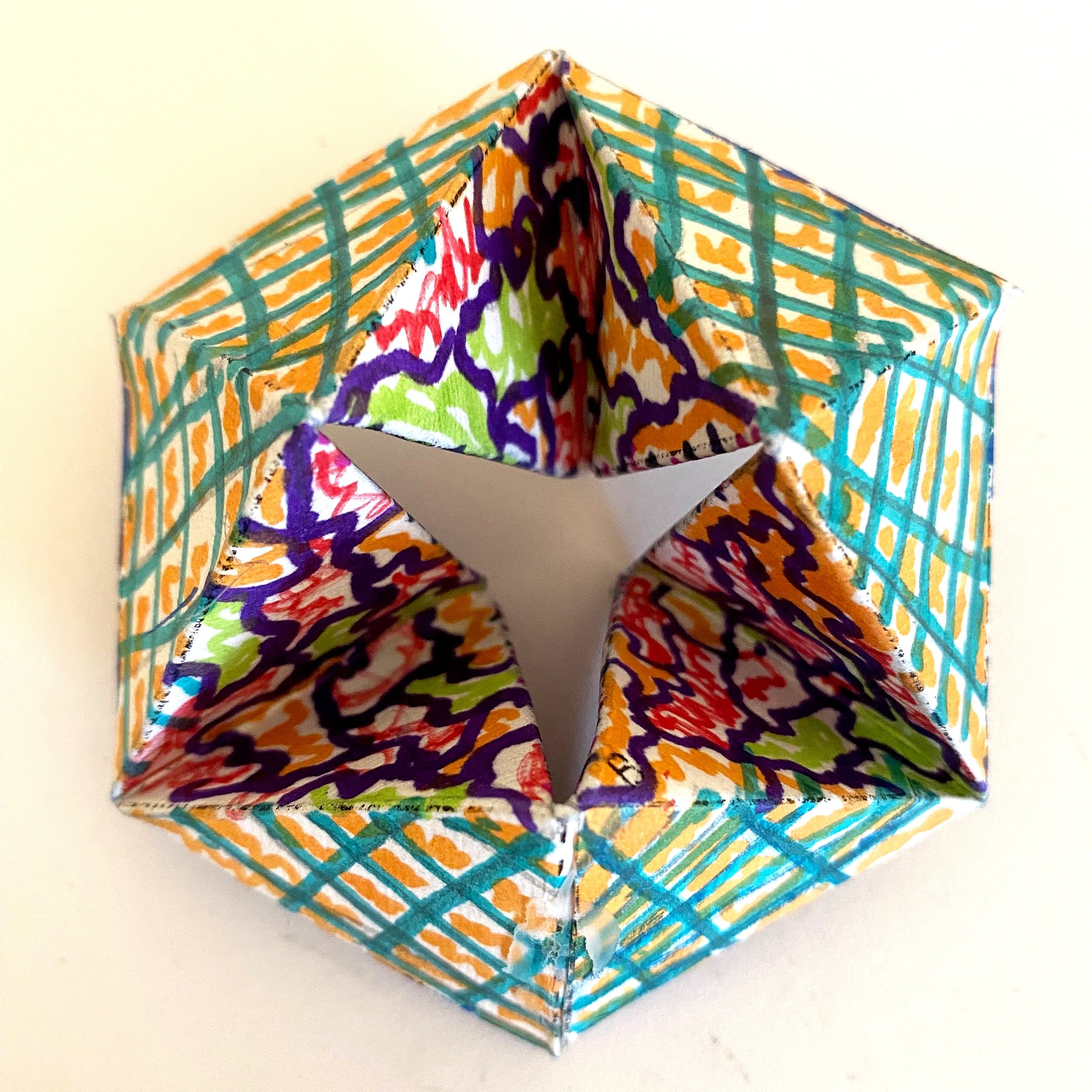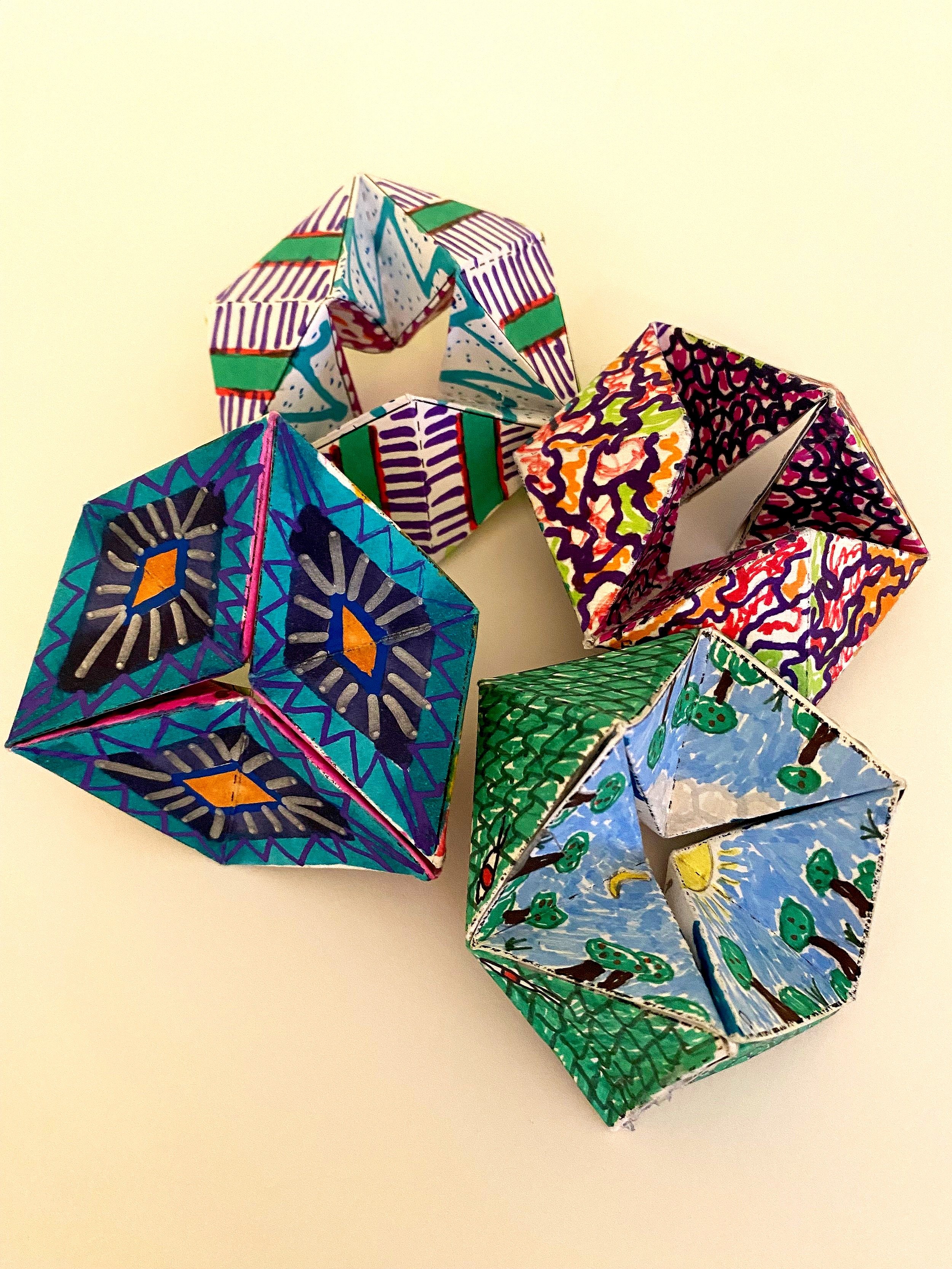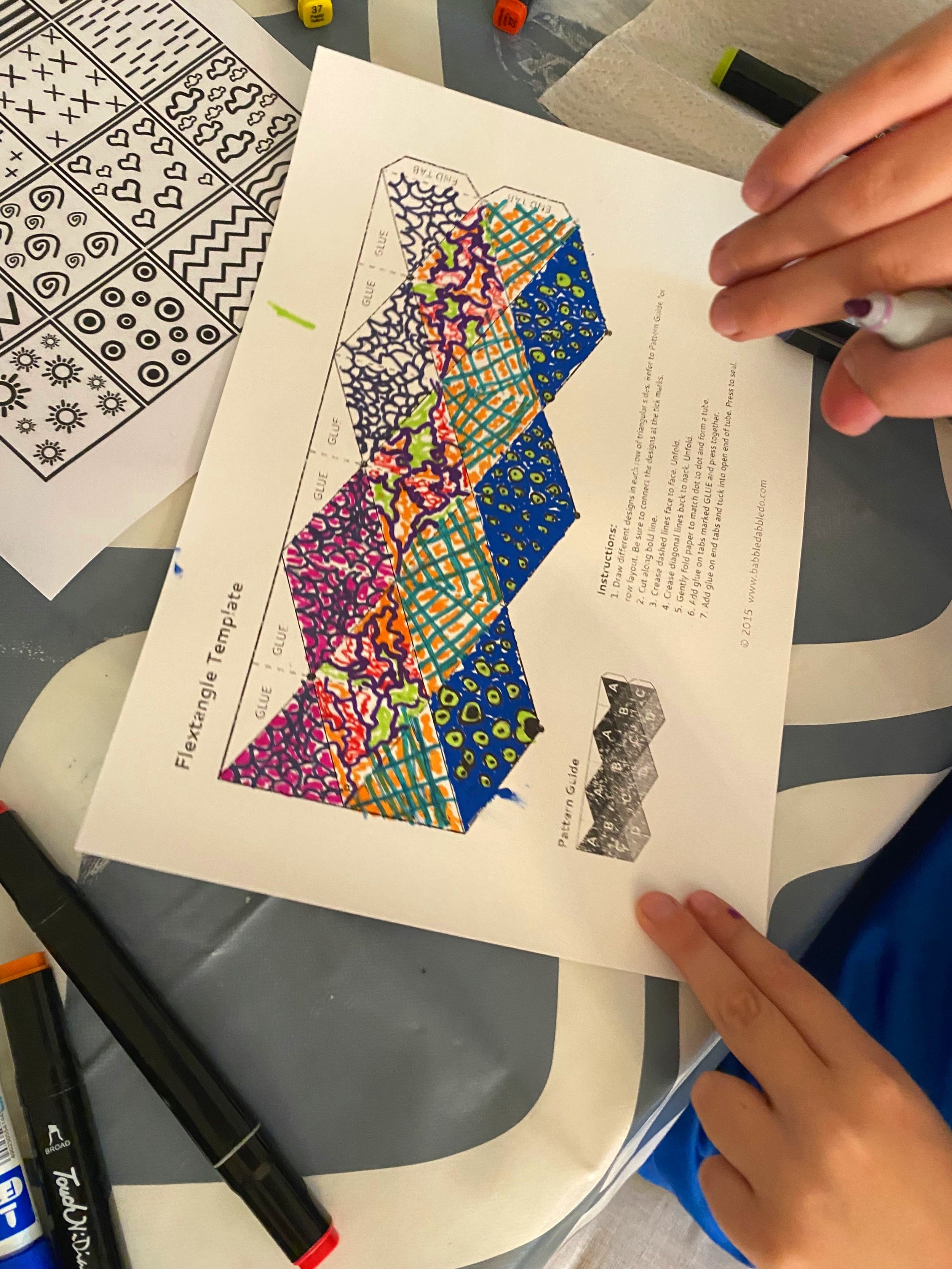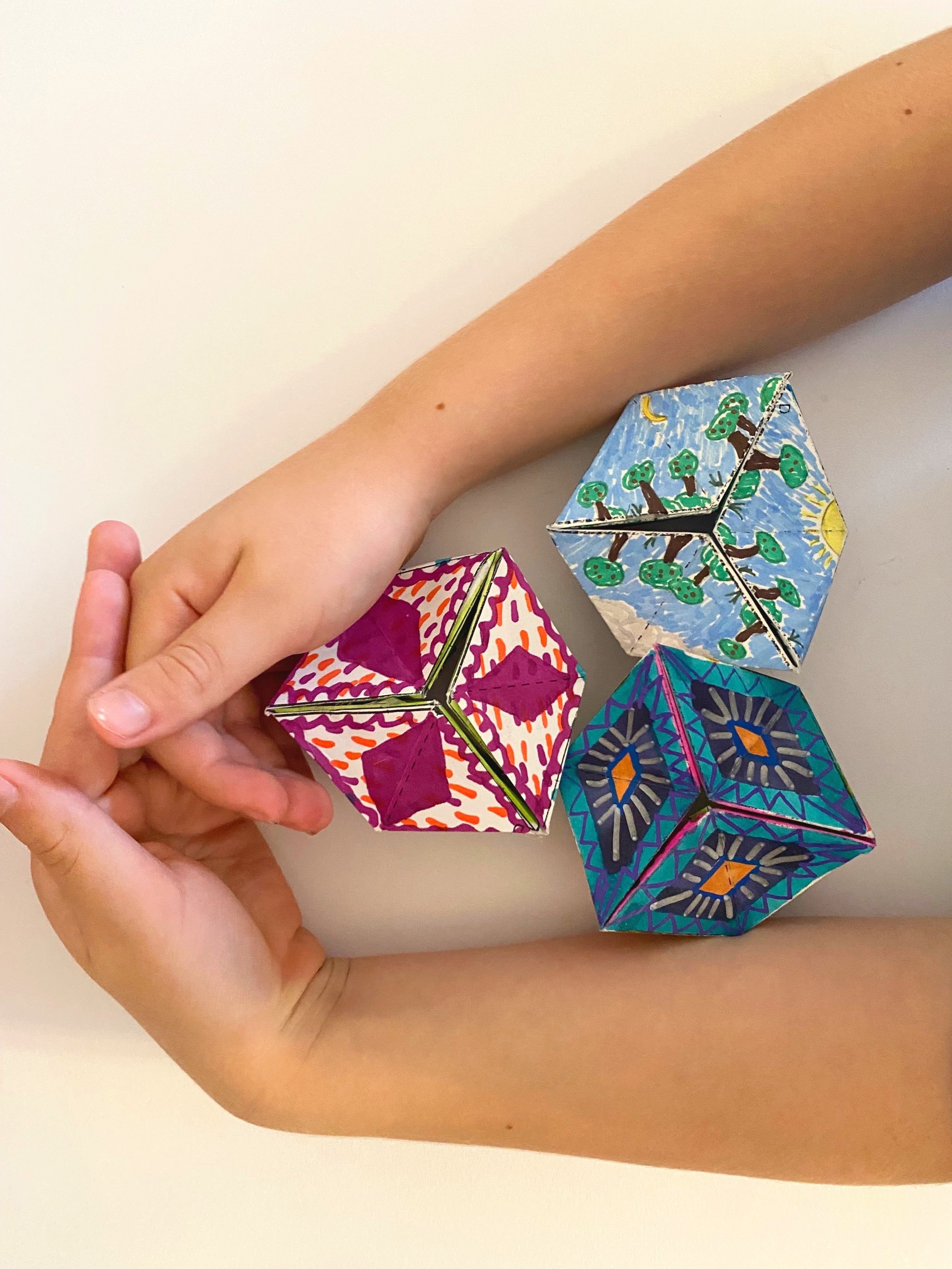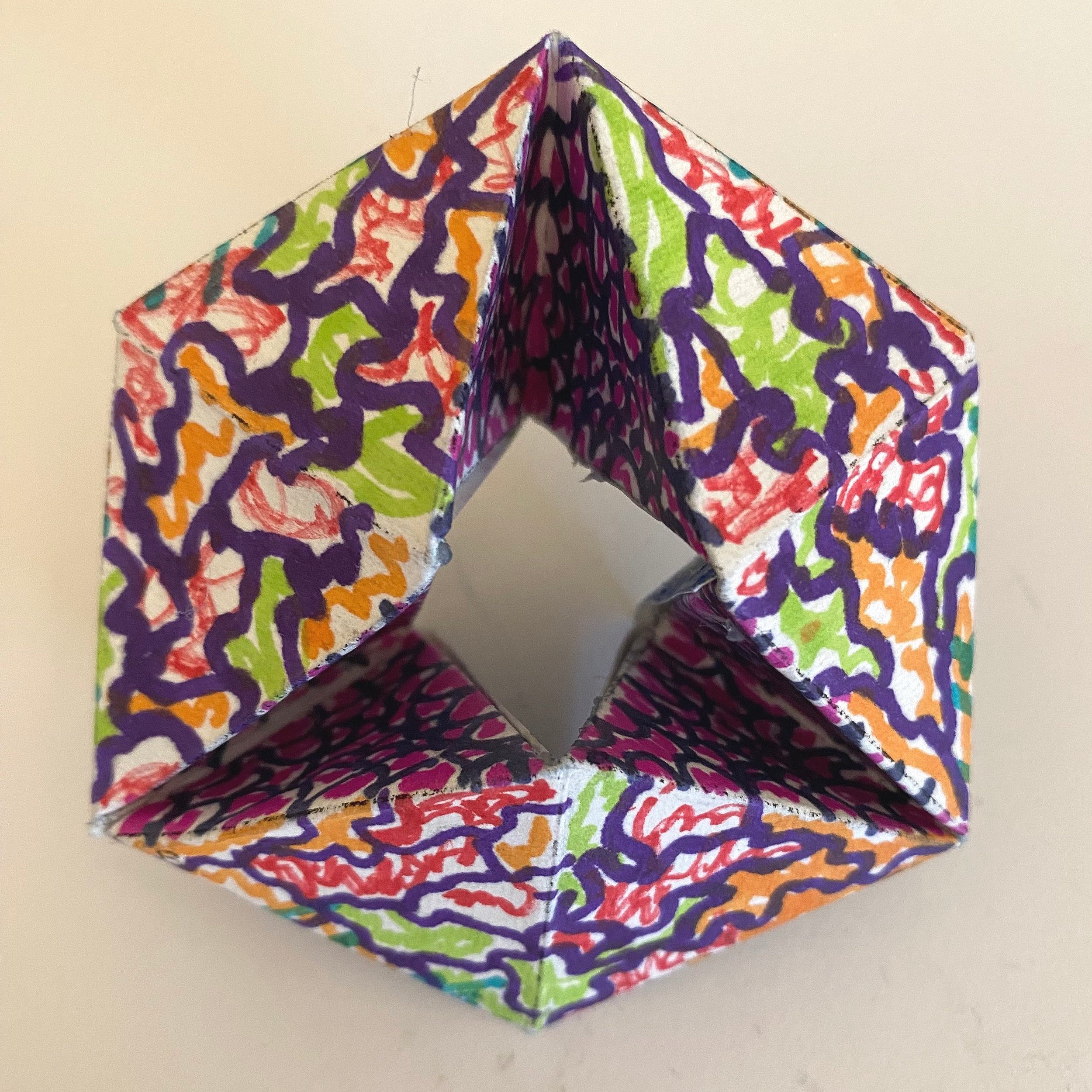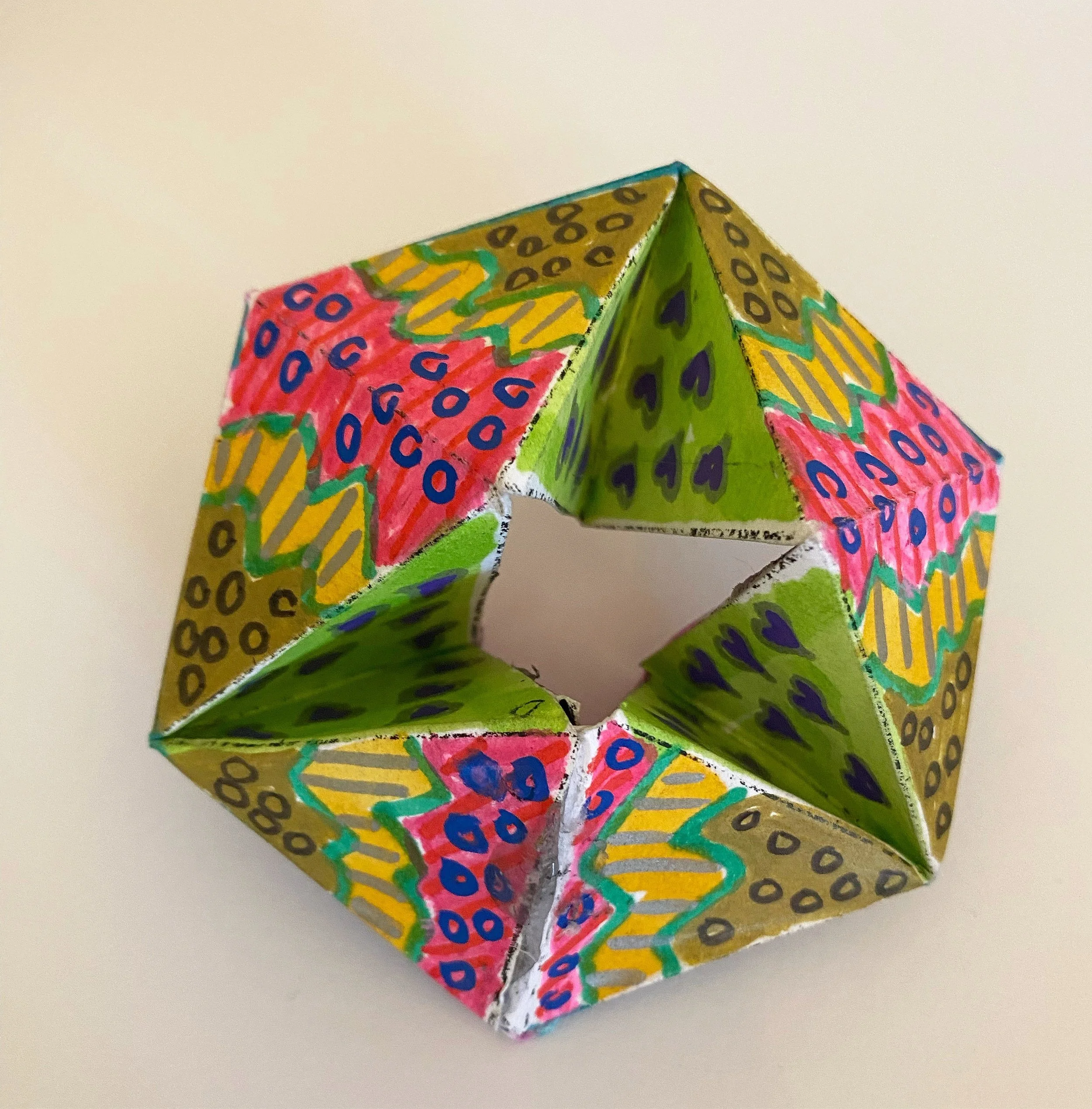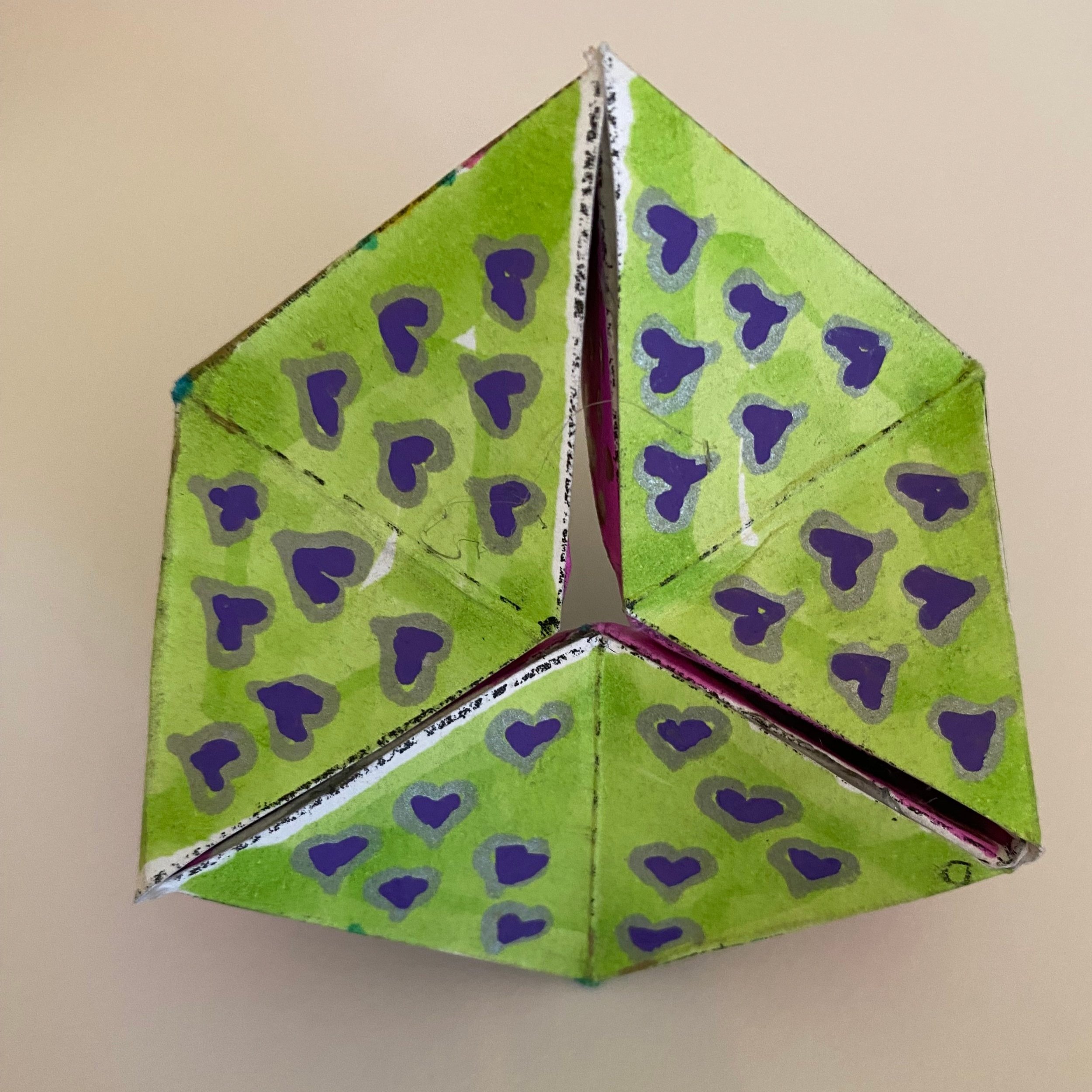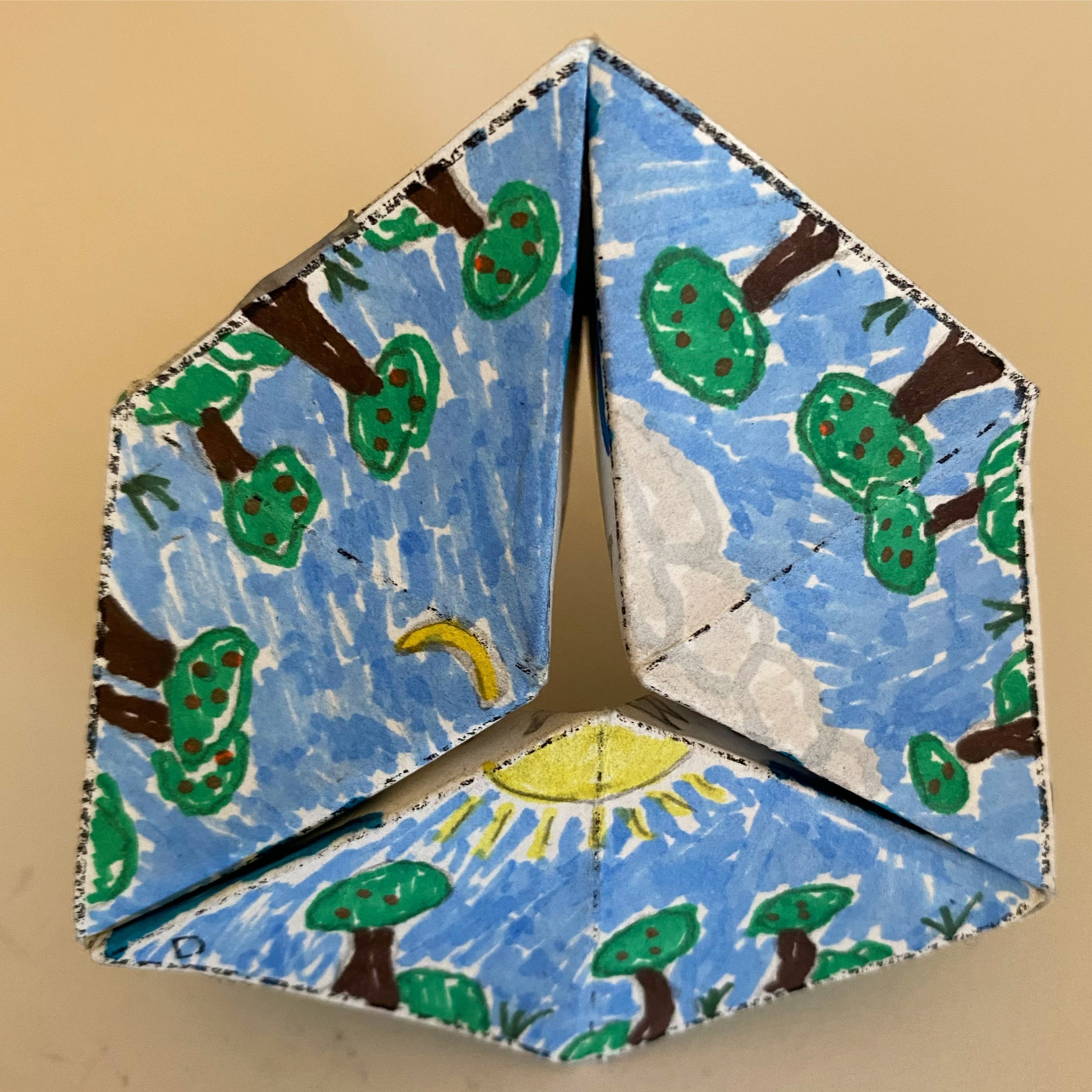Flextangles
Skill : Be able to create art as a means of self expression
Flextangles are a type of paper toy that combines art, geometry, and engineering into a fun, hands-on activity. They are flexible, twistable, and interactive paper structures that rotate in a continuous, looping motion.
Hands-On Learning - Flextangles offer a tactile and kinesthetic learning experience. Students can physically manipulate the paper structure, which helps improve fine motor skills and coordination. For children, especially those who learn best by doing, this hands-on activity is both engaging and educational.
Geometry and Math Skills - Making a Flextangle involves understanding geometric shapes and angles. Children can learn about symmetry, shapes (like triangles, squares, and hexagons), and the principles of folding and rotation. It’s a practical way to explore concepts of geometry while playing.
Creativity and Art - Students can personalize their Flextangles with their own designs and colors, which encourages creativity. This art-focused element allows kids to express themselves, making learning more enjoyable and tailored to their interests.
Problem-Solving and Engineering - Flextangles challenge students to follow instructions, think critically, and solve problems. From folding the paper correctly to assembling the structure, children are actively engaged in problem-solving tasks. It can foster an understanding of engineering principles, like how parts work together to form a functioning whole.
Patience and Perseverance - Constructing a Flextangle can be tricky, so it requires patience and careful attention to detail. This can help children practice persistence and perseverance, valuable life skills that transfer beyond the classroom.
STEM Learning - Flextangles combine science, technology, engineering, and math (STEM) concepts. While crafting, children learn about mechanics and motion, understand spatial reasoning, and engage with mathematical concepts—all while creating something fun.
Collaboration and Social Skills - If done in a classroom setting, making Flextangles can encourage teamwork. Children can work together to complete the project, share their designs, and help each other with difficult folds. This collaborative aspect can improve communication and social skills.
Relaxation and Focus - Crafting activities like making Flextangles can help children focus and calm down. The repetitive folding and coloring can serve as a mindfulness activity, helping to reduce stress and increase concentration.
Boosting Confidence - Successfully creating a Flextangle can give children a sense of accomplishment. The process of taking a flat sheet of paper and turning it into a three-dimensional, interactive toy builds confidence in their ability to create, solve problems, and complete tasks.
Materials: Paint, paper, pencils, paint brushes, scissors, sharpies, cardboard, PVA glue, metallic marker (posca)
